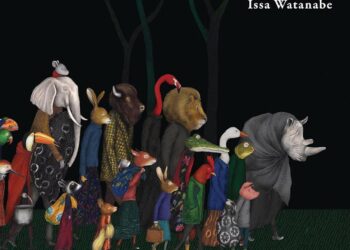In a meaningful shift in cultural funding policy, teh French government has announced a reduction in the allowance allocated to the much-lauded Culture Pass program. aimed at promoting arts access among the nation’s youth, the initiative has provided young people wiht the opportunity to explore and engage with cultural offerings ranging from museums to live performances. however, recent budgetary constraints have compelled officials to reassess the viability of sustaining its original funding levels. This decision has sparked a wave of concern among artists, cultural institutions, and advocates who fear that the cutbacks could undermine the very accessibility that the Culture Pass sought to enhance. As France navigates the complex interplay between fiscal obligation and cultural investment, the implications of this policy shift extend beyond mere economics, raising critical questions about the future of arts engagement in the contry.
The Impact of Reduced Culture Pass Allowance on Artists and Cultural Institutions
The recent decision to reduce the Culture Pass allowance has sent ripples through the artistic community and cultural institutions in France. Artists, who depend on this funding to promote thier work, face unprecedented challenges that threaten their creative viability. The budget cut may lead to reduced access to essential resources and opportunities that were previously supported by the allowance. The implications for artists include:
- Decreased visibility: With less funding, artists may struggle to afford showcases and exhibitions, leading to potential obscurity in a competitive market.
- Limited project scope: The reduction in financial aid could force artists to scale back ambitious projects, stifling innovation and creativity.
- Increased competition: As more artists vie for dwindling resources,the landscape will become increasingly saturated,making it harder for emerging talents to establish themselves.
Cultural institutions are also feeling the squeeze, as reduced funding restricts their capacity to support diverse programming and outreach initiatives. The ensuing impact can lead to a risky homogenization of cultural portrayal and expression. Key problems include:
- Budget constraints: Institutions may have to cut valuable programs,which could disenfranchise audiences and create barriers to access.
- Operational limitations: Staff reductions and budget cuts can lead to reduced capacity for institutions to curate relevant and dynamic exhibitions.
- Community engagement decline: With fewer resources, organizations may struggle to maintain existing relationships with local communities, undermining programs that foster cultural dialog.
| Consequences | Artists | Cultural Institutions |
|---|---|---|
| Visibility | Reduces showcase opportunities | Limits community reach |
| Project Scope | Forces project scaling | Curatorial restrictions |
| Innovation | Stifled creativity | Cutting-edge programs diminish |

Public Reactions and Concerns Surrounding Frances Decision on Culture Funding
In the wake of France’s decision to slash the Culture Pass allowance, public reactions have been swift and impassioned, sparking a robust debate about the future of artistic funding in the country. Many artists, educators, and cultural institutions expressed disappointment and concern that such cuts could undermine the vibrant creative landscape that france is known for. Critics argue that reducing financial support for the arts not only jeopardizes individual artists but also limits access to cultural education for young people, particularly in underserved communities.
Amidst the outcry, several key concerns have emerged regarding the implications of this decision. Among them are:
- Access to Arts Education: With diminished resources, how will schools continue to offer robust arts programs?
- Impact on Emerging Artists: many worry that young creators will struggle to find funding and platforms to showcase their work.
- Cultural Equity: There is fear that the cuts will disproportionately affect marginalized groups who rely on such programs for exposure and support.
| Stakeholder | Opinion |
|---|---|
| Artists | Concerned about diminishing opportunities and visibility. |
| Educators | Worried about cuts impacting students’ creative development. |
| Cultural Institutions | Fearful of reduced funding affecting programming and outreach. |

Exploring Alternatives for Funding the Arts Amidst Budget Cuts
As budget constraints tighten, the cultural sector grapples with the consequences of reduced funding, exemplified by the recent cuts to the Culture Pass allowance in France. In response, artists, organizations, and policymakers are exploring innovative funding alternatives. Some potential strategies include:
- Public-Private Partnerships: Collaborations between government entities and private corporations can leverage resources and create lasting funding streams.
- Crowdfunding Initiatives: Engaging communities through platforms like Kickstarter or GoFundMe enables artists to directly solicit support from their audience.
- Membership Models: Arts organizations can establish memberships offering exclusive benefits to patrons, thereby generating reliable income.
Additionally, international models provide a roadmap for diversifying funding sources. Countries like Canada and the Netherlands have implemented cultural taxation,mandating corporations to contribute a percentage of profits to the arts. This approach fosters a culture of giving whilst enhancing public recognition of the arts. A comparative analysis of various funding strategies highlights their potential effectiveness:
| Funding Model | Ownership | Adaptability |
|---|---|---|
| Public-Private Partnerships | Shared | moderate |
| Crowdfunding | artist-owned | High |
| Membership Models | Organization-owned | Low |
| Cultural Tax | Government-enforced | Moderate |

Recommendations for Supporting the Creative Sector in France
To effectively bolster the creative sector in France amidst budget cuts,policymakers should consider a multi-faceted approach that prioritizes both immediate support and long-term sustainability. investing in education and training programs for artists and cultural workers can enhance skills and adaptability in an ever-evolving creative landscape. Furthermore, increasing access to funding through grants and innovative micro-financing solutions could empower emerging talent, allowing them to bring fresh ideas and projects to fruition.engaging with local communities through outreach initiatives will foster a more inclusive surroundings, ensuring that the benefits of cultural investment reach a broader audience.
Beyond individual support,it is indeed crucial to promote partnerships between the public and private sectors. Collaborative projects can stimulate creative exchanges and resource sharing, maximizing impact. Additionally, creating a dedicated platform for creative industries to showcase their work and connect with potential investors is essential. This could include organizing regular exhibitions and festivals, where artists can display their works while also offering networking opportunities. collectively, these strategies can ensure a resilient and vibrant creative economy, reinforcing France’s position as a cultural leader on the global stage.

The Future of Cultural Engagement in France: Navigating New Challenges
The recent decision to cut the Culture Pass allowance in France has opened a Pandora’s box of challenges for cultural engagement.As funding for arts and culture experiences shrinks, questions arise about who will bear the brunt of these cuts. The Culture Pass, aimed at empowering young people to explore cultural offerings, is now under threat. This reduction has ignited a conversation surrounding the sustainability of cultural institutions, which have already been grappling with the long-term effects of the pandemic.The potential decline of public investment raises concerns about accessibility and inclusivity, particularly for underserved communities.
In light of these changes, stakeholders in the arts sector must pivot to embrace innovative approaches that can sustain cultural engagement. Some potential strategies might include:
- Strategic partnerships: Collaborating with educational institutions and private sponsors to create diverse funding streams.
- Digital conversion: Leveraging technology to offer virtual access to cultural experiences, thus reaching wider audiences.
- community involvement: Engaging local communities in programming decisions to ensure cultural offerings align with their interests.
Moving forward, it will be crucial for policymakers and cultural leaders to establish frameworks that not only counterbalance these financial constraints but also reinvigorate the cultural landscape. The future of cultural engagement in France will depend heavily on adaptability, resilience, and the willingness to forge new paths in the face of adversity.
in Retrospect
the recent decision by the French government to slash the Culture Pass allowance marks a significant shift in the nation’s approach to cultural funding and support for the arts. This reduction, which aims to address budgetary constraints, raises significant questions about access to cultural experiences for young people in France. While proponents argue that a reevaluation of the program is necessary for sustainability, critics warn that such cuts may disproportionately affect the very audience the initiative was designed to engage. As the cultural sector grapples with these changes, the future of the Culture Pass remains uncertain, prompting a broader dialogue about the role of government support in fostering a vibrant artistic landscape. Stakeholders in the arts community and beyond will be watching closely as the implications of this policy unfold in the coming months.
















